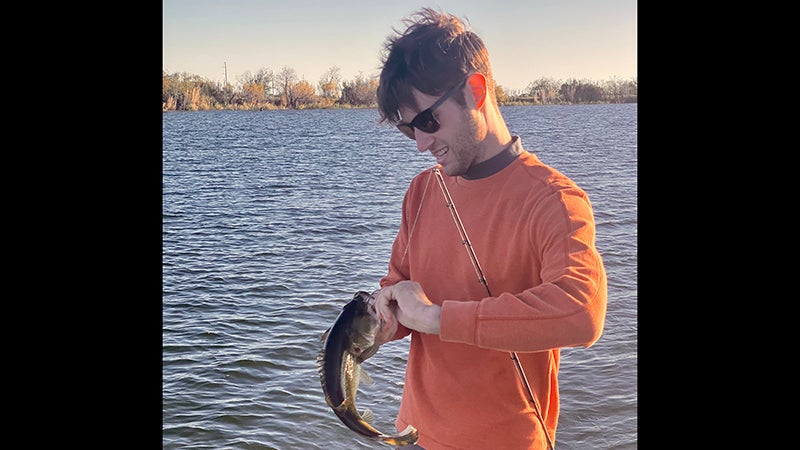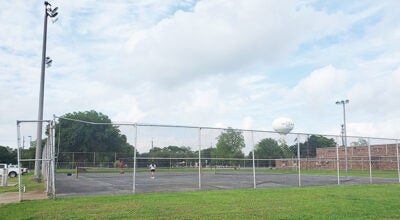BRIAN JOHNSON ON OUTDOORS — Tips for year-round fishing
Published 12:10 am Tuesday, January 12, 2021

- Caleb Johnson unhooking a winter-time bass. Courtesy Photo
|
Getting your Trinity Audio player ready...
|
As I type this column, much of Texas is covered under a blanket of snow. This seems like the perfect time to be under a warm blanket, enjoying a good movie and a cup of coffee or hot chocolate.
The problem is you can’t catch fish sitting in an easy chair watching television, and I decided this would be the year I would fish all four seasons (I usually don’t fish in hunting season).
I quickly discovered there is a bit of a learning curve when it comes to bass fishing on large reservoirs like Sam Rayburn and Toledo, especially in the winter. The guys who regularly catch tournament-winning sacks of fish on these lakes aren’t just lucky. They know exactly what they are doing and why they are doing it before they ever launch their boat or make the first cast.
I have always thought I was a decent fisherman, but must admit I struggle to catch fish when the water gets near or below 50 degrees. I decided I would tackle this challenge the same way I tackle them in other areas of my life.
I would simply develop a strategy to see if I could catch more bass year round. This is what I have come up with so far.
Read articles and watch videos
When it comes to fishing research, Google is your friend. I simply type in phrases like “winter bass fishing Texas” and read everything I can. I read and watch videos for the state at first.
Then, I get more specific and study the lakes I plan to fish. Pay attention to the lures, techniques and water depths they recommend. I study these reports from several different years and try to put together a pattern. I also study tournament results and see which areas the winning stringers came from.
Map study
This is where I get all of the maps I can find on the areas I plan to fish. I try to use hard copy as well as online versions. Google maps and apps like Navionics are a great resource for studying the contours of the lake. When looking at the maps, I try to find places that match what I read, and watched videos over. I will often mark these places on my GPS in advance and start my scouting in these areas first.
Scouting
After I mark several places, it is time to head to the lake and check the places out with my fish finder. I check for grass, structure and fish. If I don’t find what I’m looking for, I keep looking until I do.
Fish
Last but not least, it is time to fish. Once I locate a good area, I try to catch a few fish and then mark this spot with notes for future reference. If the fish don’t bite at first, I use different baits until I either find success or move to the next spot.
While this method isn’t completely fool proof, it helps me stay on target and not feel like I am just randomly wandering around hoping to stumble on a fish. Feel free to apply these tactics to your fishing strategy and if you catch a big one … send me a picture!
Brian Johnson is pastor of First Baptist Church of Winnie, owner of DuckDogTrainer.com and writes about outdoors for Port Arthur Newsmedia.





